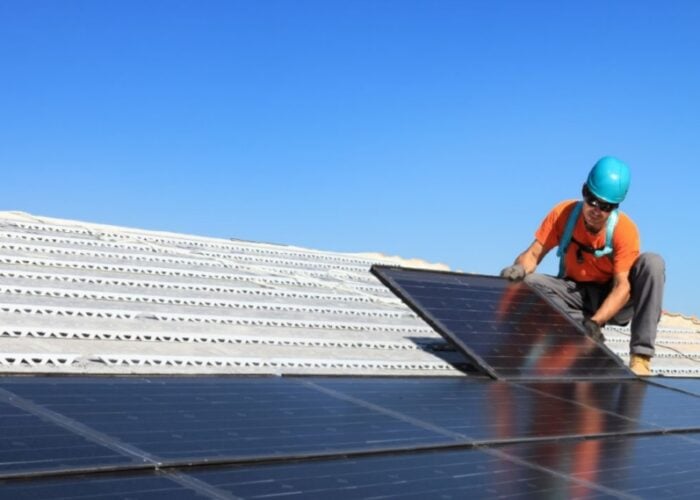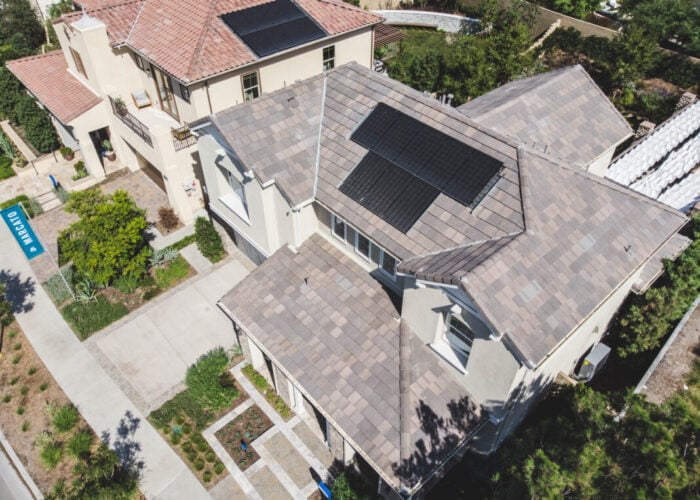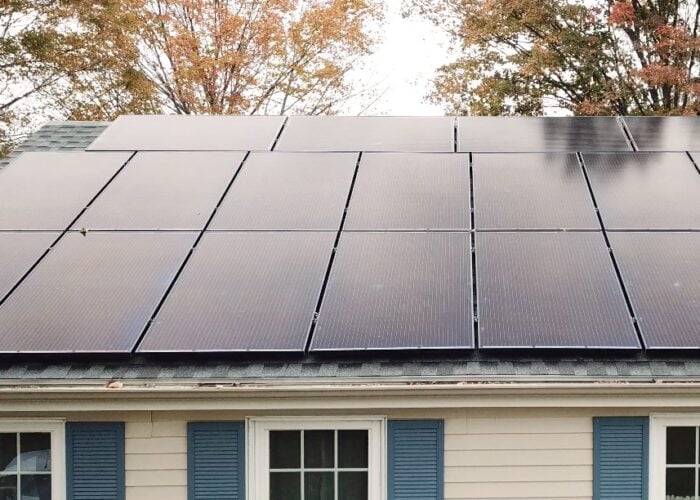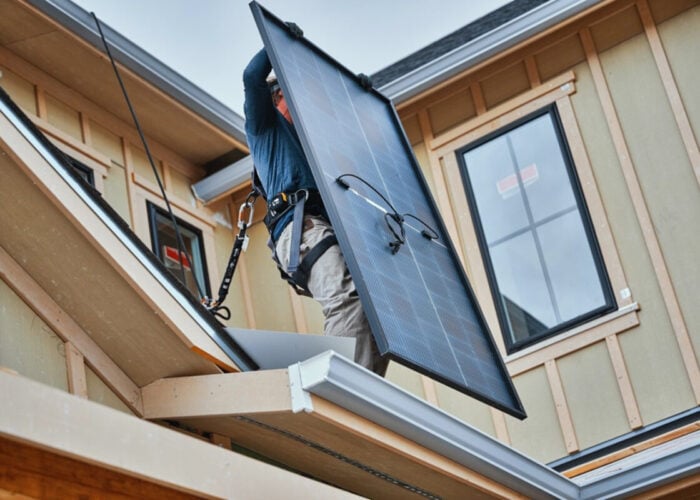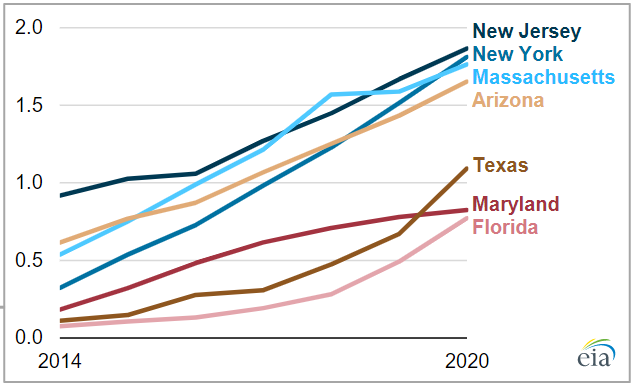
Small-scale solar installations in Texas and Florida got a boost last year thanks to incentives and policy changes in the states.
That’s according to a new report from the US Energy Information Administration, which shows that although California is still the country’s leading state for small-scale solar, others experienced rapid growth in 2020. A total of 4.5GW small scale solar capacity, which EIA defines as any installation smaller than 1MW in size, was added between December 2019 and 2020,
Unlock unlimited access for 12 whole months of distinctive global analysis
Photovoltaics International is now included.
- Regular insight and analysis of the industry’s biggest developments
- In-depth interviews with the industry’s leading figures
- Unlimited digital access to the PV Tech Power journal catalogue
- Unlimited digital access to the Photovoltaics International journal catalogue
- Access to more than 1,000 technical papers
- Discounts on Solar Media’s portfolio of events, in-person and virtual
With 10.6GW, California had the most small-scale PV capacity of any US state, according to the report, accounting for just under a third (31%) of the entire small scale market. New Jersey and Massachusetts came just behind with 1.9GW and 1.8GW respectively.
Despite having smaller overall capacity figures, Texas and Florida’s small scale solar generation grew significantly last year. Texas’ capacity grew 63% to 1,093MW, while Florida added 282MW and hit 773MW, representing an uptick of 57%, EIA said. The report noted that certain restrictions on leased solar systems were eased in Florida in April 2018, paving the way for future growth. Before then, the Florida Public Service Commission restricted electricity sales from leased systems, but now with this policy removed, residential solar PV has become “financially feasible”, EIA said, resulting in what it called “immense” growth across the state.
Explaining the growth in Texas, it cited the state’s property tax exemptions that have “encouraged small scale solar growth in the state”.
Solar power generation in Texas proved resilient compared with fossil fuel generation this winter as the state faced extreme weather conditions and power outages.
Another state improving its position in the small-scale solar market is Illinois, which added 309MW of capacity last year, the third highest installation rate in the US, bringing its total small-scale capacity to 515MW.
There has been a significant uptick in support for small scale deployment across the US in recent months, and US residential solar market bosses have claimed their revenues have started to recover from last year’s COVID-19 restrictions. Sunlight Financial’s chief executive Matt Potere told panellists at a virtual webinar last year the lender’s Q3 2020 sales grew 50% compared to the same period last year, rebounding from a summer hit by stay at home orders.
Small-scale projects have also shown to be an affordable route to the US clean energy transition. A study published by a handful of US trade bodies in December showed that adding 247GW of rooftop and community solar, alongside 160GW distributed storage capacity, could be the most cost-effective energy transition method for the next half-century, and would be enough to power more than 25% of US homes.

